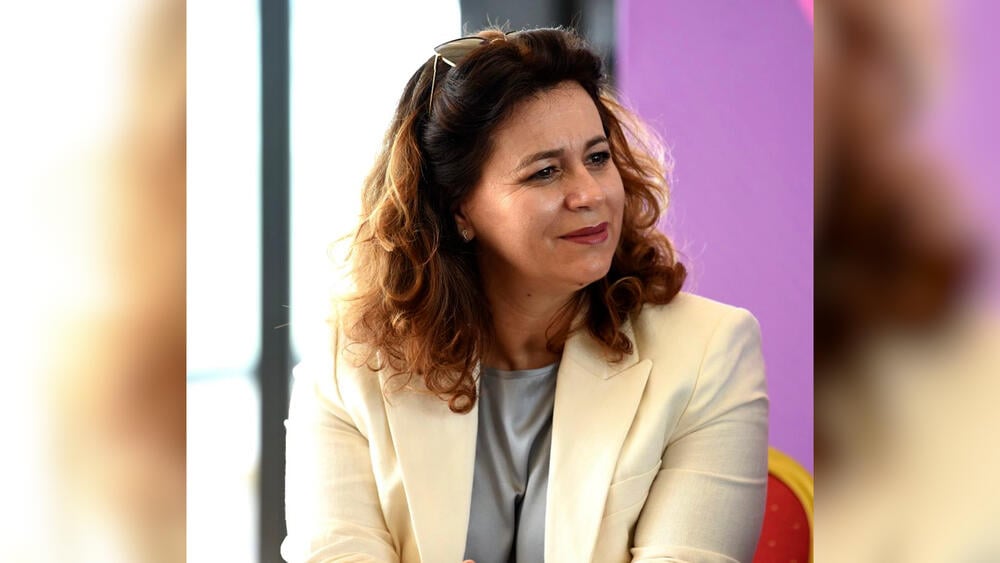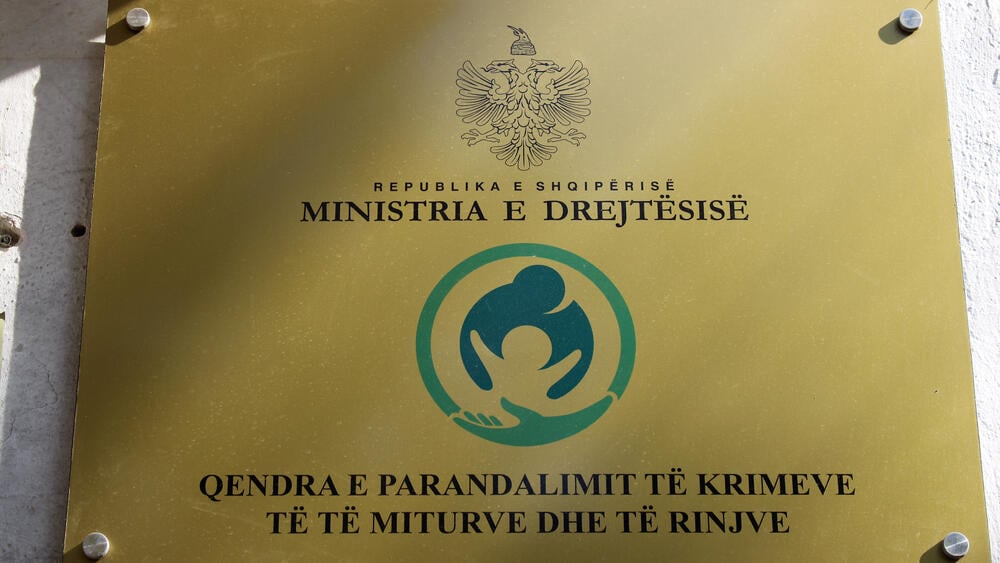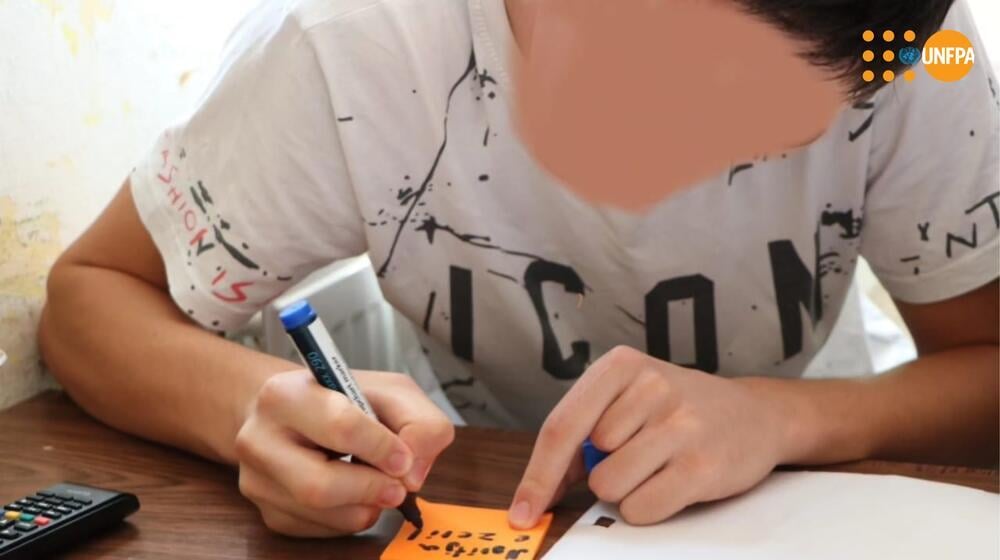"I know now when I get angry, I will count to 10 before I act." This is what a 14-year-old serving his time at the Institute for the Re-education of Juveniles in Conflict with the Law (IRM) in Kavaja says. Once prone to outbursts of anger and violent behaviors, today he is a testament to the transformation that can occur thanks to re-education and reintegration programs.
This young man, like many others at IRM, has been given a second chance to build a better future. During the summer school and workshops organized by the Center “Act for Society” in collaboration with IRM staff, and supported by UNFPA, he became familiar with the concept of the "cycle of violence," understanding that his aggressive behaviors were linked to the violent patterns he had learned in his family.
He, like many of his peers, learned to identify emotions, manage anger, and react to stressful situations in a calmer and more self controlled way.
Juveniles who have committed a criminal offense, for which the sentence is at least 7 years and considered a social danger, as well as repeat offenders who have committed a crime more than once, are put at the IRM in Kavaja to serve their time. The Kavaja Institute is the only place where juveniles in conflict with the law serve their sentences when the court decides on the most severe sentence, which is "arrest for imprisonment." Currently, there are about 30 young people in this institution, and there has been a decrease in the number since 2018, when the Criminal Code for Juveniles was amended.
"The new Code has a more reintegrative and educational approach in the community, unlike the previous one, as tougher sentences (deprivation of freedom) were given. The Code changed from punitive justice to reintegrative justice," says the Director of the Center for the Prevention of Juvenile and Youth Crimes (QPKMR), Klaudia Hasanllari.

While the Director of IRM Kavaja, Marinela Alia, explains that the purpose of the institution is to re-educate juveniles who have committed criminal offenses, offering them a series of educational programs and psychological support. "The reintegration process is important," - she says, "as it represents the return of the juveniles to society, equipped with new skills for problem-solving, behavior and emotion management, as well as professional skills.".
It is worth emphasizing that the reintegration program is adapted based on the criminal offense. The juveniles serving their sentence are aged 14-18 years but, depending on the case, they can stay up to 21 years of age in the institution. During their stay, the juveniles continue normal schooling following where they left off when they were outside, and are also offered engaging programs such as sports or painting and even more.

"Throughout the work in the institution, there are certainly apparent success stories of juveniles who continue and complete their education after their time served in the institution, juveniles who manage to find a job or pursue their interests and personal passions. Currently, in the institution we have juveniles who have completed general secondary education and are involved in occupational activities. They use their time in the institution for reflection, learning new skills and setting objectives for themselves that are necessary for reintegration, and receive valuable long-term lessons for further growth.", - says the director of IRM Kavaja.
The latter informs that "close to release, juveniles are involved in specific programs that help them adapt to life outside the institution. Support structures such as the Center for the Prevention of Juvenile and Youth Crimes (QPKMR) play a key role in this process. Meanwhile, a close relationship is maintained with employment offices, but also with other institutions to offer these young people the opportunity to reintegrate into society, without being penalized for the mistakes they have made in the past.".

According to the head of QPKMR, Klaudia Hasanllari, although a lot of work is done to enable re-education and reintegration of these young people both at IRM Kavaja and those who have received a lighter measure, like house arrest or mandatory presence / reporting, great attention should be paid to prevention.
"We work and try to reintegrate these young people, but the focus should be on prevention.", - says Hasanllari, emphasizing that "we should give up the expression “It's not my child hence it's not my responsibility” and not to run away from situations where we can help a juvenile even if not ours, because he is part of the community where we live.".
Although there are 30 minors at IRM Kavaja, Hasanllari informs that "there are about 1,400 cases reported to the police for violations by minors.".
"A generation with pronounced anger issues is growing up and social media has a huge influence. In many cases it promotes a model that does not benefit the society at all, on the contrary, it seriously harms it.", - says Hasanllari. "Influencers on social media networks should understand that they have a great influence on the minds of young people. If a young person follows an artist who, in his lyrics and video clips, shows the life of luxury and how you can get rich through activities that violate the law, at least he has the moral obligation to show that what is shown there is only one side of the coin and, on the other side, should show that, if you break the law, you can go to jail, or in extreme cases, even lose the life.", - she adds.
This means an ‘alarm bell’ for Hasanllari, because these pronounced anger issues in juveniles and bad models they follow is a "screaming rebellion from juveniles indicating they are not getting the proper attention from parents, family members or the community who are very busy with work, or trying to make ends meet and face many other challenges daily. Therefore, in the absence of this attention, juveniles do things that attract attention.".
"There is always a 'why'. No aggressive behavior or criminal act comes without a cause. The community, with the support of institutions and various agencies, must work together so that every case is treated from the outset and juveniles will no longer end up committing criminal offenses or in detention institutions.".
In addition, the head of QPKMR informs that "there are no girls convicted of serious crimes. They have usually received light penal sentences, in most cases they have been victims or survivors.".
This intervention is implemented within the framework of the UN Joint Program “Ending Violence against Women”, funded by the Government of Sweden and implemented by UN Women, UNDP, and UNFPA in partnership with the Albanian Government.


